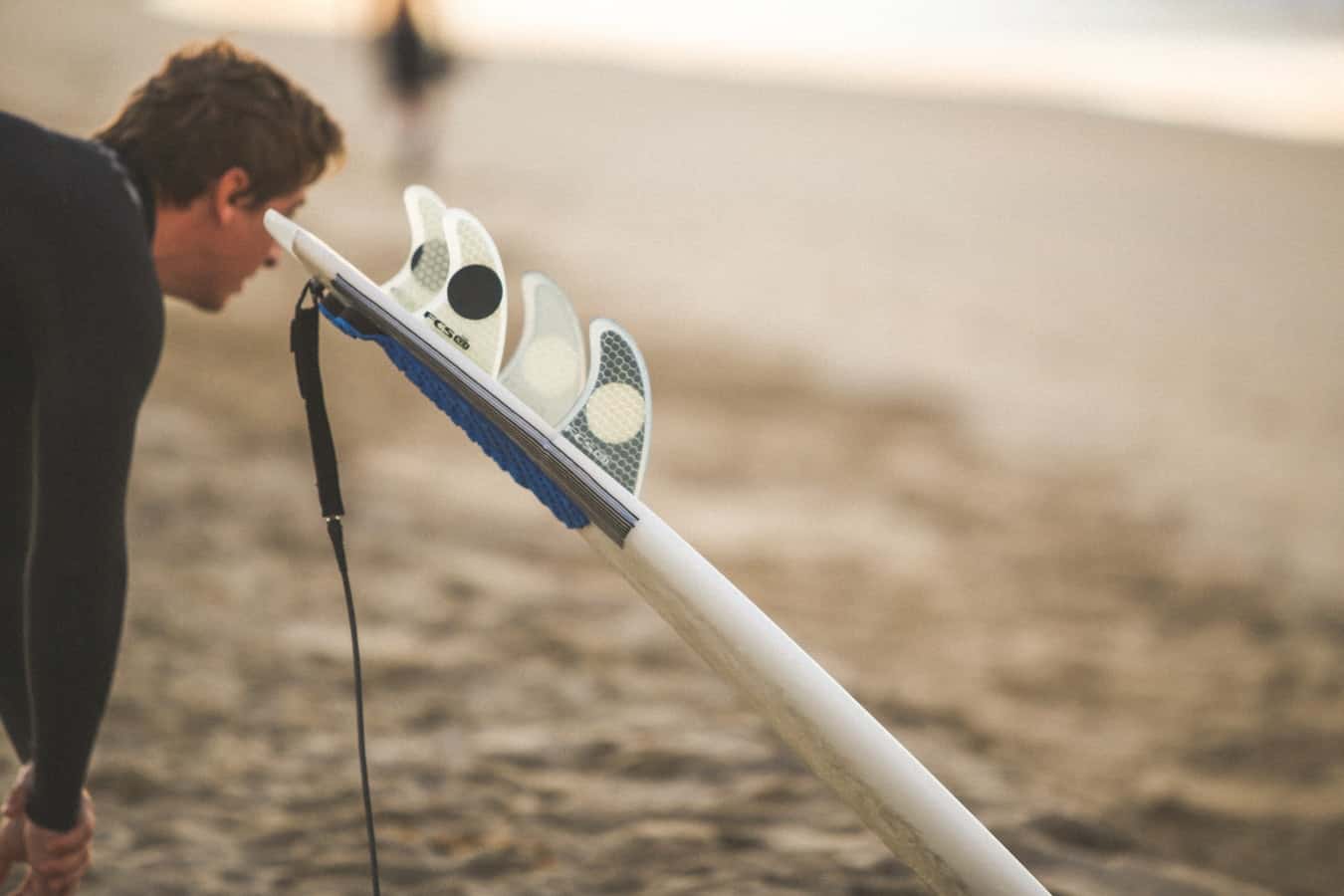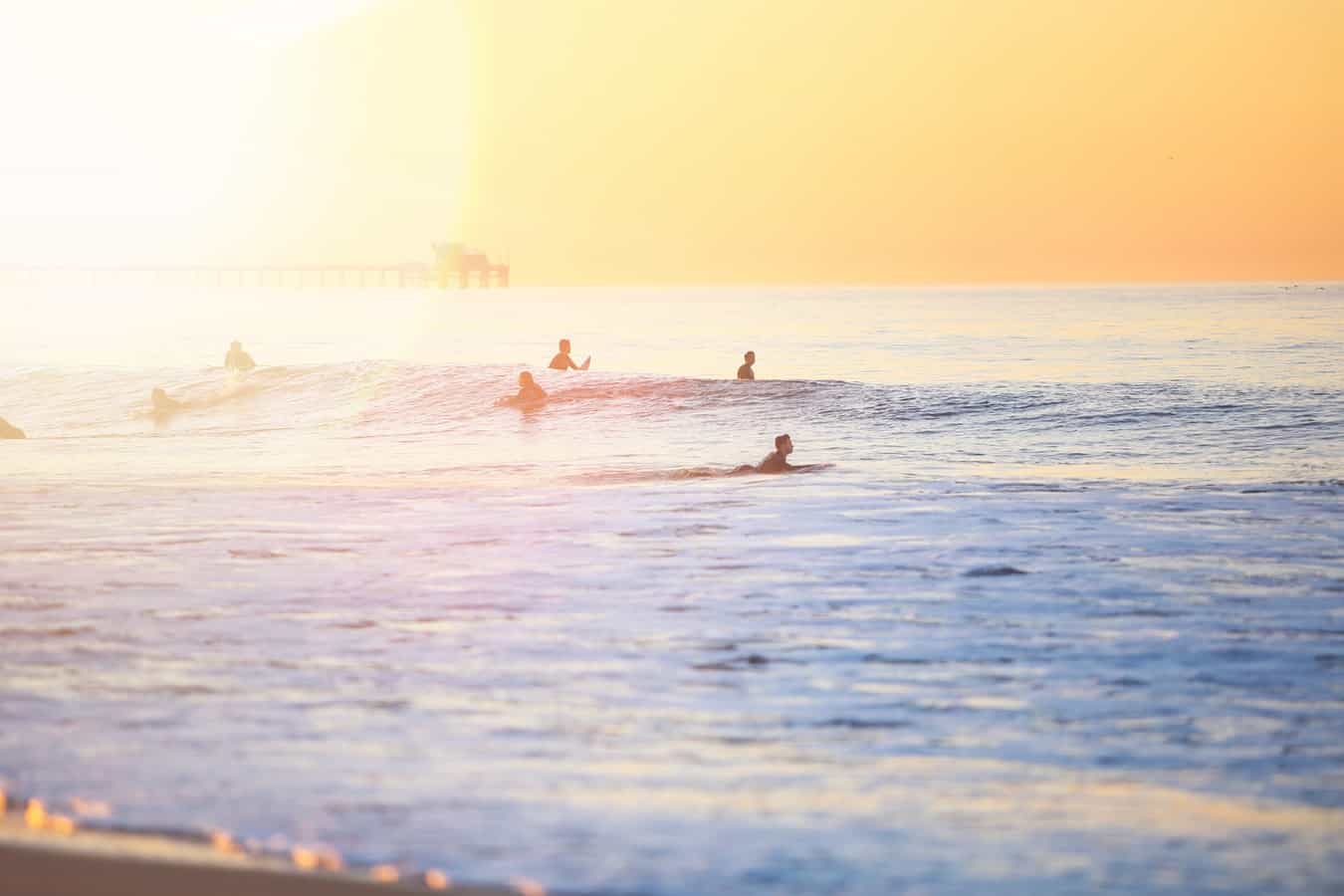We all have an image in our minds of a surfer in the ocean, balancing on a magnificent wave, motionless, captured in a moment of sublime perfection. We imagine him balanced perfectly, not a care in the world, riding forever. It looks so simple and easy to do, right? But he just didn’t take his longboard out to the water and started riding. It took long months and years to be able to know a good wave from a bad one, and all the trial and error he had to go through is what we never see. Surfing isn’t as easy as it looks.
Are surf lessons worth it? Surf lessons are worth the time and money because one can only learn how to surf by learning from someone with experience. Even experienced surfers drop back from time to time and take surf lessons to fill in the missing gaps in their surfing knowledge. Surf lessons not only teach how to surf but also knowledge of the ocean’s dangers. Instructors teach how to identify riptides and the best board for you to use that could save your life. Instructors teach you, among other things, how to surf safely, and how to get out of life-threatening situations.
Is There A Way To Prepare For My First Lesson?
Whether you decide to sign up for group lessons or individual instruction, you will have a great time, especially on the first day. If you are over 20 years of age, it’s advised that you take individual lessons, because a lot of group surf lessons are geared to children and teens.
No matter at what age you decide to get into surfing, there are a few things you should know before you start.
- You’ll be swimming a lot.
The first thing you’ll learn is that surfing means spending a lot of time in the water swimming. You’ll paddle while lying on the surfboard, and you’ll be doing just basic swimming with your board in tow. You’ll develop a relationship with the ocean you never had before.
- You’ll fall off the surfboard more times that you will remember.
Be prepared to take numerous tumbles off the board. Like skiing, you’ll slip and fall off often. If you’re aware you’re going to fall before your first lesson, it will seem normal once it happens. No one rides perfectly the first time.
- Your entire body will hurt the next day after your first lesson.
You will be using muscles all over your body when you surf, not just your arms and shoulders, but your calf, thigh, and core muscles in your abdomen are used when you surf.
Soreness the next day is expected, so don’t let the pain discourage you. Soon, after several surf lessons, our muscles will no longer ache, and you’ll be able to do more with your body than you thought possible.
Your rib cage will be very sore from bouncing up and down on the board as the current flows underneath. Your feet and especially the toes will ache from paddling and kicking with your legs. A good way to treat soreness and stiffness is to do stretching exercises.

What Will I Learn In My First Surfing Lesson?
The first surf lessons take place mostly on the sand, before going into the water.
- Your instructor will explain the surfboard.
You will learn why a surfboard is shaped the way it is, and how you can use it to your advantage. He or she will also show you how to get the maximum benefits from a surfboard.
You will likely start the first lesson using a longboard, which is at or near 9 feet in length. Longboards seem very big and even a bit bulky to the first time surfer, but longboards are very easy to paddle on, as well as to catch waves. The longboard class of surfboards keeps you the most buoyant on the water.
- You’ll be spending a lot of the lesson on the sand.
Depending on the instructor, you may spend some or all of your first lesson time on the sand. Instructors will teach you paddling and kicking movements, and you’ll simulate moving in the water there on the sand. You’ll learn how to position your body to move in different directions and how to get more speed off the board.
You will also learn the “pop-up” technique on the sand. A pop-up is like a pushup. Using your upper body, your instructor will show you the best way to go from a supine, lying position on the board to a full standing position.
Surfers pop-up when a wave approaches that they want to ride. If you become good at a surfboard pop-up, you’re going to catch more waves.
Pop-ups build arm and upper body strength. A pop-up is crucial to learn and is one of the most physically rigorous activities you’ll do on a surfboard. By repeating the pop-up movement, your body builds muscle memory by way of your central nervous system.
Building muscle memory is the way a musician learns to play with virtuosity on his instrument, and the way baseball players learn to field and swing the bat.
- You are going to get wet.
There is no way to avoid the fact that you’re going to get wet, and water will likely get up your nose, making you feel temporarily uncomfortable. This is normal and to be expected as you learn to navigate your way through the ocean.
Remember to stay calm and relaxed when you feel a slight discomfort. After a few passes, water in the nose or aches and pains will disappear.
- The waves will toss you around in the water.
If you’ve ever gone body surfing, you know the feeling of being thrown about by the force of the water. You ride the wave towards the shore, and it throws you around as if you’re tumbling in a washing machine.
Instructors will advise you to always remain calm when a wave catches you, and to let it take you to shore. It is not likely you’ll break any bones or suffer serious injury. Your body will resurface anywhere from 3 to 10 seconds.
Remember to keep your face protected from your surfboard by covering your face with your hands.
Most important is that you have fun. This is an obvious cliché but accepting that your first time out will be grueling, making your body ache for days, swallowing water and coughing up water, are part of the learning experience.
Accept the fact that it won’t be easy or even that much fun the first time. The moment you ride your first wave, you’ll want to ride another one, then another. There’s no feeling quite like being balanced on a wave, the water forming a tube around the surfboard and your body. Lessons help you get there faster.
Related Questions
Can I Learn To Surf Watching Videos Online?
We live today in an age of information. We learn a lot of facts by doing online searches and watching instructional videos.
Let us say you are learning to become a phlebotomy technician, and you’re watching a video that tells you how to draw blood. Then you go the next day and attempt to draw blood from an actual patient. You’ll likely have a few questions that were not addressed in the video. video, before you’re comfortable sticking a needle in the patient’s arm.
You can gather information by watching, but it is not concrete like a lesson with a real-life instructor. Learning online is an abstraction; while you learn to understand concepts, the only way to improve is to learn in the physical world.
If you watch cars in a car chase, it doesn’t teach you how to drive, nor the perils associated with driving.
It’s the same for surfing. When you’re guided through the movements and understand why you move the way you do, and under guidance, you go into the water and learn the joys and the dangers firsthand, you learn extremely rapidly.
On one or two surfing lessons, you are better prepared than if you are watching 50 hours of online surfing instruction.
How Much Do Surfing Lessons Cost?’
You can sign up for an initial 2-hour individual surfing lesson and pay anywhere from $40.00 to $90.00. After the initial lesson, you may not need to sign up for more.
Intermediate and experienced-level surfers will want to gain new surfing techniques and will seek out an instructor for a single lesson. They may pay a little more for a single lesson.
Some instructors will charge more, and their lessons can include a surfboard and a wetsuit for you to use.
If you live in Southern California, surfing instruction usually takes place at surfing hotspots, such as
- Malibu
- Huntington Beach
- San Diego
- Santa Cruz
- Newport Beach
- Laguna Beach
If you visit California and want to take a surf lesson, there’s a lot of good surfing instructors to choose from.
What Should I Bring To My Surf Lesson?
You will be out in the sun, first on the sand and then in the water. It’s important to bring sunscreen, preferable sunscreen made for surfers. The water magnified the strength of the sun’s rays, so it’s easy to get a sunburn.
You can wear a bathing suit and a t-shirt so you can be comfortable. Your instructor may suggest you wear a body suit, depending on the strength of the waves on the day of your lesson.

